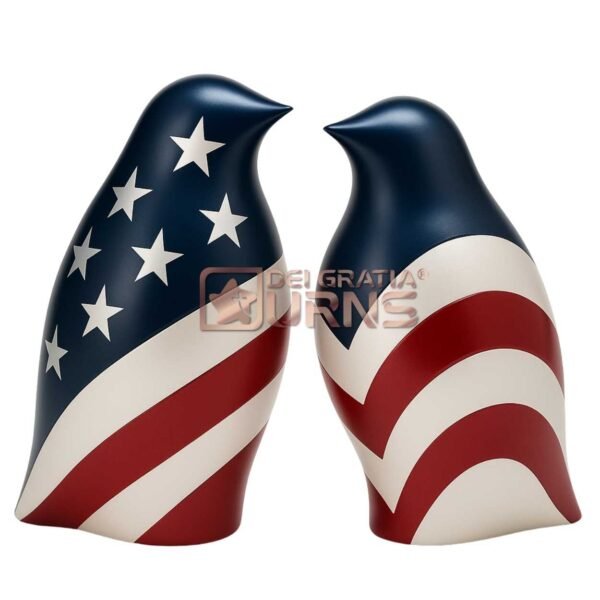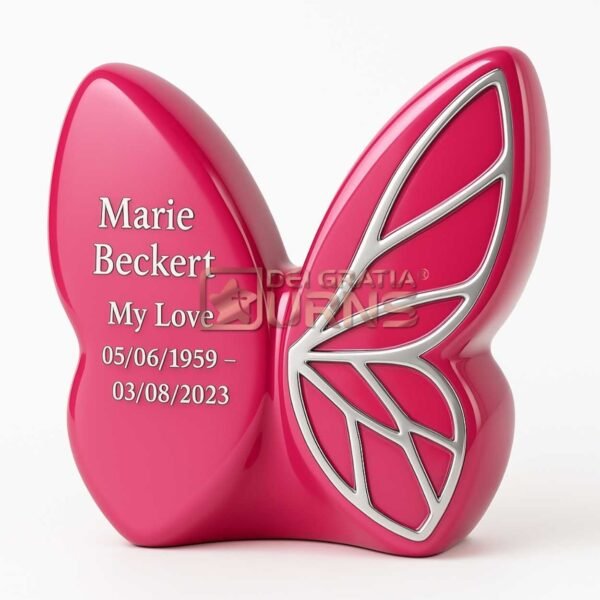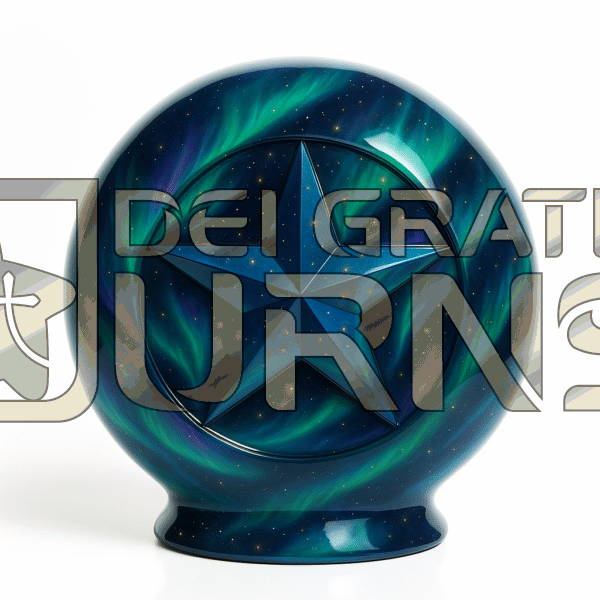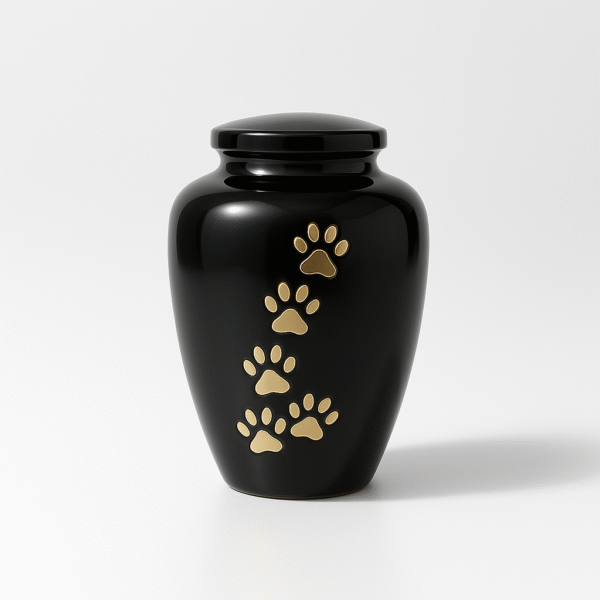7 Deeply Personal Truths About Urns, Cremation, and Ashes Most People Learn Too Late

When someone you love passes away, the world doesn’t stop—but your world does. Amid the heartbreak, a quiet, respectful decision awaits: choosing how to preserve the memory of the departed. For many, this journey leads to understanding urns, cremation, and ashes in a way they never expected.
Table of Contents
But what exactly is an urn for ashes? And why does something so small carry so much emotional weight?
At Dei Gratia Urns, we believe in guiding you through this sensitive chapter with compassion and clarity. This isn’t just a product guide—it’s a story about humanity, remembrance, and what it truly means to honor a life.
1. What Is an Urn for Ashes—Really?
An urn is more than a container; it’s a deeply symbolic vessel designed to hold the cremated remains of a loved one. Historically, urns date back thousands of years. Ancient Greece and Rome used urns as central elements in honoring the dead.
Modern urns, especially from brands like Dei Gratia Urns, serve both practical and emotional purposes. Yes, they hold ashes, but more importantly, they cradle memories.
Some common materials include:
Each offers a unique way to reflect the personality and spirit of the one who passed.
2. Why Cremation Has Become So Popular in the USA
According to the National Funeral Directors Association, cremation rates in the United States have surpassed 57% and are still climbing. But why?
The reasons are complex and personal:
- Cost: Cremation is often more affordable than traditional burials.
- Flexibility: Families can choose when and how to hold a memorial.
- Environmental concerns: Options like biodegradable urns support eco-conscious decisions.
- Cultural shifts: Younger generations are more open to non-traditional farewells.
As cremation becomes the new normal, understanding urns becomes more than relevant—it becomes essential.

3. Different Types of Urns—and What They Say About Love
Every urn tells a story.
At Dei Gratia Urns, we craft designs that reflect diverse relationships. Here are some you might encounter:
1. Companion Urns
These are designed to hold the ashes of two people, often partners. It’s a touching symbol of eternal togetherness.
2. Keepsake Urns
Small in size, these allow multiple family members to each keep a portion of the ashes.
3. Biodegradable Urns
Made from natural materials like paper or salt, they dissolve in water or earth—ideal for sea or green burials.
4. Decorative Urns
These focus on design and aesthetics, blending seamlessly into home interiors while discreetly honoring a loved one.
5. Pet Urns
Because grief isn’t limited to human relationships. Losing a pet is losing family.
Each type speaks volumes about the person it memorializes—and the people who choose to remember.
4. The Emotional Weight Behind Choosing an Urn
You’d think picking an urn is like buying any household item. But it’s not. Clients often tell us it feels like saying goodbye all over again.
At Dei Gratia Urns, we’ve seen people cry, smile, and pause for long silences while selecting an urn. Some touch every design. Others sit and stare, remembering birthdays, holidays, quirks.
An urn becomes a mirror of your grief, your love, your journey. That’s why every detail matters—from the engraving font to the material finish.
Our staff doesn’t just sell—we listen. We walk beside you.
5. Understanding the Cremation Process (And What Happens to Ashes)
Let’s break the taboo.
Cremation is a heat-intensive process that reduces the body to bone fragments. These fragments are then processed into a fine powder—what we call ashes.
Contrary to myths:
- Ashes are odorless and sterile.
- They usually weigh 3–7 pounds.
- They’re not actually “ash,” but pulverized bone.
Most crematoriums return the remains in a temporary container. That’s where choosing a personalized urn becomes significant. It’s the moment you claim your loved one’s story.

6. Where Should You Keep an Urn? The Unspoken Debate
This might sound odd, but people often whisper when asking, “Where do I keep the urn?”
The answer? There’s no rule.
Some common places include:
- A mantelpiece for daily remembrance
- A memorial shelf or shadow box
- A burial plot with the urn inside a vault
- A columbarium niche, like those in cemeteries or churches
What matters is what feels right. We’ve even seen urns stored in gardens, under trees, or taken on road trips to favorite destinations.
The key is to respect the emotional needs of the living while honoring the memory of the departed.
7. Customizing an Urn: Because Love Is Always Personal
What makes an urn feel like “the one”?
It’s the personal touch.
At Dei Gratia Urns, we offer:
- Engraved names
- Photo panels
- Custom artwork
- Bible verses, poetry, or personal quotes
- Fingerprint etching
- Symbolic imagery (crosses, hearts, doves)
Custom urns allow you to celebrate the person—not just their passing. They say, “You mattered. You still matter.”

8. Religious and Cultural Considerations: Every Faith Honors Differently
Different communities handle death in beautifully diverse ways.
- Hinduism sees cremation as a pathway to moksha (liberation).
- Buddhism supports cremation and scattering of ashes.
- Christianity increasingly accepts cremation.
- Islam traditionally prohibits cremation.
- Judaism often prefers burial, but reform movements now allow cremation.
Understanding your family’s belief system helps guide urn selection and placement.
9. What Does the Law Say? Ashes and Urns in the USA
U.S. law is relatively flexible when it comes to handling ashes.
You can:
- Scatter ashes on private land with permission.
- Transport ashes by air (TSA requires specific containers).
- Store ashes at home indefinitely.
- Bury in a cemetery plot, often inside an urn vault.
States have slightly varying regulations. If you’re uncertain, consult your local Department of Health or a licensed funeral director.
10. Why People Are Choosing Memorial Jewelry and Secondary Keepsakes
For some, one urn isn’t enough.
Memorial jewelry allows loved ones to carry a small portion of the ashes in:
- Necklaces
- Bracelets
- Keychains
- Rings
Others choose photo frames, sculptures, or even teddy bears with ashes capsules inside.
It’s not about holding onto death—it’s about holding onto love.
11. Common Questions People Are Afraid to Ask
Let’s answer them without shame:
Q: Do I have to keep the ashes forever?
No. You can scatter them, bury them, divide them, or even turn them into diamonds.
Q: Can I open the urn?
Yes, most are designed to be resealed securely.
Q: Can I travel with ashes internationally?
Yes, but check with U.S. Customs and Border Protection and the destination country’s guidelines.
Q: What if I lose the urn?
That’s why some choose to keep a backup keepsake or portion elsewhere.
12. The Dei Gratia Urns Promise: Love, Dignity, and Design
At Dei Gratia Urns, we don’t just sell urns—we honor stories.
Each piece is crafted with:
- Artisan care
- Durable quality
- Deep respect for your grief
Whether you’re pre-planning or navigating sudden loss, we walk beside you—with heart, not sales scripts.
Explore our exclusive urns at www.deigratiaurns.com
Final Thoughts: Urns, Cremation, and Ashes Are About Love, Not Loss
We rarely talk about death until we have to. But when the time comes, we all deserve beauty, respect, and meaning.
Urns are not a sign of goodbye. They’re a testament to the love that continues to live in us.
So, what is an urn for ashes?
It’s a final resting place.
A beginning of healing.
And in the hands of a grieving heart—it’s everything.
13. Real Families, Real Stories: Why Choosing the Right Urn Matters
Every urn holds not just ashes—but a story.
We recently spoke with Maria Jenkins from Austin, Texas. When her husband passed suddenly, she felt paralyzed. “Picking an urn felt like the only thing I could do for him at that point,” she said, her voice trembling. “I wanted it to feel like home.”
She selected a handcrafted walnut urn from Dei Gratia Urns, engraved with the coordinates of their favorite fishing spot. “It’s not just a vessel—it’s our story.”
Another customer, Samuel Klein, a retired firefighter from Brooklyn, opted for a marine-grade stainless steel urn. “He was a Navy vet. That urn belongs on a ship, just like him.”
Every design choice—material, color, engraving—is a memory honored.
14. How to Pick the Right Urn for Your Loved One
You’re not just buying an item. You’re making a final tribute. Here are five heartfelt questions to help guide your choice:
- What did they love?
Nature? Music? Pets? Art? Choose an urn that reflects those passions. - Where will it be kept?
Indoors or outdoors? Displayed or buried? This affects material and design. - Who else is grieving?
Keepsake urns can help families share ashes and healing. - Would personalization help you grieve?
Adding a message, symbol, or image can deepen your emotional connection. - Are you planning a ceremony?
Some urns are designed for scattering or burial events.
Choosing from Dei Gratia Urns ensures you’re not rushed or sold to—you’re supported with grace.
15. The Rise of Eco-Friendly Cremation Urns
In 2025, sustainability is no longer optional. Grief meets green innovation.
Eco-conscious families are increasingly choosing:
- Biodegradable urns made from bamboo, cornstarch, and recycled paper
- Water-soluble urns for scattering at sea
- Seeded urns, which grow into trees when buried
At Dei Gratia Urns, we offer a range of green options that respect the planet while honoring your loved one’s memory.
A 2023 study by the Green Burial Council found that 41% of Americans would prefer an eco-burial if given a meaningful alternative. Our urns make that vision real.
16. How Ashes Are Divided in Blended Families
Modern families are beautiful—and complex. We often receive inquiries like:
“Can I divide the ashes between biological and stepchildren?”
“Is it disrespectful to split ashes among siblings?”
“Can I keep some ashes even if we’re burying the rest?”
The answer? Yes. Love isn’t measured in ounces. It’s measured in memory and meaning.
Dei Gratia offers matching keepsake sets so everyone gets to hold a part of their person. It’s not about dividing grief—it’s about sharing love.
17. The Art Behind Every Dei Gratia Urn
We believe urns should be crafted, not manufactured.
At Dei Gratia Urns, we collaborate with artisans from North Carolina to Oregon, ensuring every piece is:
- Hand-inspected for finish and weight
- Tested for longevity and resistance
- Polished and sealed with care
- Designed with timeless, symbolic aesthetics
We use real mother-of-pearl inlays, laser engraving for intricate text, and metalwork that honors traditional American values.
This isn’t factory work. It’s soul work.
18. How to Talk to Children About Urns and Ashes
Loss is hardest on those who don’t understand it.
Children often have questions like:
- “Where did grandma go?”
- “Is she inside that vase?”
- “Can I hug her?”
Here’s what therapists recommend:
- Use real words: say “death,” not “sleeping.”
- Let them choose a keepsake or symbol.
- Create rituals like drawing a picture or saying a prayer at the urn.
We’ve even helped families create child-friendly urns—colorful, soft-cornered, engraved with bedtime stories or stars. It’s not morbid. It’s love, made visible.
19. Are Ashes Ever Mixed or Lost? The Truth Behind Cremation Fears
One of the biggest fears families have is this:
“What if I get someone else’s ashes?”
Reputable crematoriums follow a strict chain-of-custody:
- Unique ID tags accompany the body.
- Ashes are processed individually.
- Documentation is kept at every step.
You can request a cremation certificate for added peace of mind. Always work with licensed providers.
At Dei Gratia Urns, we help families vet crematoriums and funeral homes to ensure every step is transparent and respectful.
20. When You’re Not Ready: Temporary Options That Honor the Wait
Sometimes grief is too raw to decide right away.
For these families, we offer:
- Velvet keepsake pouches
- Simple, non-decorative urns for temporary use
- Consultations months later, when you’re ready
There is no “deadline” for choosing an urn. The only time that matters is yours.
Staff picks
21. Can You Change Your Mind? Re-Urning a Loved One
It happens more often than people admit. A family selects an urn, then later feels it doesn’t reflect their loved one.
That’s okay.
At Dei Gratia Urns, we allow for graceful transitions. You can:
- Transfer ashes into a new urn
- Repurpose the old one as a keepsake box
- Return unused or incorrectly chosen products
Grief is nonlinear. Your decisions can evolve.
22. Final Tributes That Go Beyond the Urn
Here are ways families amplify the memorial:
- Ashes into art: Mixed with paint or blown glass
- Ashes into vinyl: Pressed into records of favorite songs
- Ashes into fireworks: Yes, for real—especially popular with veterans
- Ashes into diamonds: Made under high pressure
Whatever you choose, know this: the urn is the beginning, not the limit, of your tribute.




